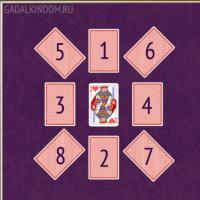St. Isaac's Cathedral map. Saint Isaac's Cathedral. Public opinion about the cathedral




About the cathedral
Saint Isaac's Cathedral- one of the main attractions of St. Petersburg. Its round gilded dome serves as perhaps the most recognizable accent in the silhouette of the city panorama. In Russia, this temple is the main Orthodox cathedral. It occupies the 4th largest in the world, second only to St. Peter's Cathedral in Rome, St. Paul's Cathedral in London and St. Mary's Cathedral in Florence.
The scale of this majestic monumental building does not leave indifferent any spectator, even if you contemplate St. Isaac's Cathedral from a distance. Close to it, it is simply breathtaking: the height of the building is 101.5 meters, the diameter of the dome is 26 meters, and the weight of one massive granite column is 114 tons.
St. Isaac's Cathedral is a monument of Russian classicism, personifying the great era when the Russian Empire was at the peak of its power after the victory over Napoleon's army in the Patriotic War of 1812.
visit
Tickets with a Guest Card can be obtained at any box office. We recommend getting tickets at ticket offices No. 6 and 7 at the entrance to the cathedral (colonnade opposite St. Isaac's Square). Show your guidebook and map to the cashier.
Please note: in special cases, the service of guides can be provided on a priority basis; tourists with a Guest Card are served on a first-come, first-served basis
These ticket offices also offer free tickets for children under 7 years of age. Tickets for children over 7 years old can be purchased at ticket offices No. 1-5, which are located from the side of the Alexander Garden and the Admiralty.
Interior decoration
Luxurious interior decoration matches the elegant monumentality of the building. Marble of various colors, malachite, lapis lazuli and other valuable, rare types of stone were used in the interior design. The walls of the cathedral are decorated not only with picturesque icons, but also with unique mosaics.
The altar image of St. Isaac's Cathedral is presented in the form of a stained-glass window - a rather atypical element for Russian church architecture. The Resurrected Christ is one of the largest stained glass windows in Europe.
Under the very dome of the cathedral, a dove hovers - a symbol of the Holy Spirit. Seemingly fragile at first glance, the figurine is made of silvered bronze, and its wingspan is about 2 m.
Colonnade of St. Isaac's Cathedral
The building of St. Isaac's Cathedral is the second high-rise dominant of St. Petersburg after the spire Peter and Paul Cathedral. Climbing up to the colonnade, which is located under the main dome, you can admire the magnificent city panorama from a height of 43 m. A spiral staircase of 262 steps leads to the observation deck. A visit to the colonnade is included in the Guest Card. The colonnade may be closed in case of adverse weather conditions.
From the history
An interesting fact is that this majestic building was the result of the fourth attempt to build St. Isaac's Cathedral. Initially, the church in the name of St. Isaac of Dalmatia was conceived by Peter I - as a sign of respect for the great emperor to his patron saint. Alas, the wooden church not far from the Admiralty was destroyed by floods, after which a stone one was erected on the site of the current Bronze Horseman, but it suffered as a result of a fire. Then Catherine II entrusted the project to the architects A. Rinaldi and V. Brenna, but it was never completed. And, finally, the magnificent cathedral, already known to our contemporaries, was designed by the French architect O. de Montferrand, and Emperor Nicholas I oversaw the construction.
More than 400 thousand people took part in the construction - masons, carpenters, talented craftsmen from the people. These were serfs who had to work in exorbitantly difficult conditions, often losing their lives. Behind the splendor that we are admiring now is the real feat of the participants in the construction of St. Isaac's Cathedral - courageous and conscientious ordinary people.
The largest temple in St. Petersburg
St. Isaac's Cathedral - the largest Orthodox church in St. Petersburg, created in honor of St. Isaac of Dalmatia. On the map of St. Petersburg, St. Isaac's Cathedral is located in the Admiralteisky district of the city on St. Isaac's Square.
The cathedral was built in the style of late classicism in 1818-1858. Today St. Isaac's Cathedral is one of the dominants of St. Petersburg: its height is 101.5 m. The width of the cathedral is 100 m. The building has a square shape; the facades of the cathedral are decorated with 4 porticoes with bas-reliefs and 112 monolithic granite columns. The diameter of the metal dome of St. Isaac's Cathedral is 25.8 m. The facades are finished with gray marble.
The interiors of St. Isaac's Cathedral are decorated with malachite, marble, lapis lazuli, mosaics and gilded bronze. Russian sculptors (P. Klodt, I. Vitali) and artists (F. Bruni, K. Bryullov and others) worked on the interiors of the cathedral. The cathedral has a unique stained-glass window of the main altar depicting the Resurrection of the Savior. The area of the stained-glass window is 28.5 m2.
Today the cathedral is a museum. On the upper colonnade of the cathedral is located Observation deck, which offers a magnificent view of the center of St. Petersburg.

History of St. Isaac's Cathedral
The first wooden St. Isaac's Church was built to the west of the Admiralty in 1701. In 1712, Peter I and Ekaterina Alekseevna were married in the church. Second stone church was built in 1717 on the site of the Bronze Horseman. But it was too close to the Neva, so the foundation of the church was constantly undermined.
The third St. Isaac's Church began to be built in 1768 on the site modern cathedral designed by A. Rinaldi. But it was completed only to the eaves. Under Paul I, the architect V. Brenna completed the church as soon as possible, but changed the design of Rinaldi, adding brick walls and domes over the marble part of the cathedral. The church was knocked out of the appearance of the front of St. Petersburg, which gave rise to an evil epigram:
This is a monument of two kingdoms,
Both so decent
On the marble floor
A brick top has been erected.

In 1816 O. Montferrand won the competition for the reconstruction of the cathedral. The main condition for the restructuring was the preservation of the altar part. old church. The final design for Montferrand was accepted in 1825, although the first stone was laid in 1819.
The architect made an extraordinary decision and began to erect porticoes with columns before the construction of the walls of the cathedral. To lift the 114-ton columns, special scaffolding was built according to the project of A. Betancourt. These scaffolding made it possible to raise the column vertically in 45 minutes.
In 1858 St. Isaac's Cathedral was consecrated.

After the revolution, St. Isaac's Cathedral was devastated. In 1928 services were stopped, and in 1931 an anti-religious museum was opened in the cathedral.
Previously, the Foucault Pendulum hung in the cathedral, the length of which made it possible to demonstrate the rotation of the earth.
The history of the object is connected with four Cathedrals:
First St. Isaac's Church, during the time of Peter Romanov, served for the sacred service of the workers of the Admiralty shipyards. erected Holy place in 1707 and was considered the main church in the city. Later, sailors of the Baltic and Admiralty Fleets began to take the oath in the cathedral.
Second St. Isaac's Church, was founded somewhat later than the first in 1727 and replaced its predecessor. The new sanctuary was built of stone, unlike the first wooden temple, and was distinguished by its beauty and elegance of execution. Later, due to the unfortunate location, the building had to be repaired - the vaults were replaced with stone ones, and the iron dome was covered with copper. Attempts to restore the object were in vain and the building was moved to the place where it is to this day.
Third St. Isaac's Cathedral. Initially, the third temple was supposed to look different - it was assumed that five domes and a high-rise three-tiered bell tower would rise above the building. However, the plan was not destined to come true, and because of the too short deadlines for construction, it was decided to replace five graceful domes with one massive one. One tier had to be removed from the three-tiered bell tower. Marble cladding was completed only to the cornice, the rest of the building was made of brick. Due to the inconsistency of the building with the appearance of the central square, the question of building a new temple was soon raised.
Modern Cathedral has the form that can be observed even now. Founded by decree of Alexander the First. The outstanding architect Auguste Montferrand worked on the building project, whose stone bust is part of the museum's exposition. modern church adorns more than a hundred monolithic columns. Wall cladding with light gray marble gives the building a special charm. The most beautiful work of the master Lemaire - "The Resurrection of Christ" adorns the relief of the pediment of the northern portico of the museum. The master Ivan Petrovich Vitali worked on the figures of the apostles and the design of the doors. The sculptures in the niches were created by the master Klodt. During the Second World War, the cathedral was badly damaged by bombing, in some places of the object traces of shelling are preserved.
In 2015 Russian Orthodox Church appealed to the city leadership with a request to transfer the museum into the possession of the Russian Orthodox Church. Some deputies expressed doubts about this because of the fear that the cultural property will be closed to tourists. From a mechanical point of view, the building is in disrepair and requires immediate reconstruction.
Attraction St. Isaac's Cathedral photo:
Important information about St. Isaac's Cathedral in St. Petersburg: opening hours, opening hours, ticket prices
Working mode:
Museum Monument St. Isaac's Cathedral is open daily from 10.30 to 18.00 (Wednesday - day off)
Colonnade of St. Isaac's Cathedral: 10.30 to 18.00 (evening: 18.00 - 22.30; white nights: 22.30 - 04.30)
Museum monument to the Savior on Spilled Blood is open daily from 10.30 to 18.00 (Wednesday is a day off)
Stone Museum: from 10.00 - 18.00 daily. From 01.10 to 30.04 - day off - every 3rd Wednesday of the month.
Ticket prices:
Colonnade of St. Isaac's Cathedral ticket price - 250 rubles.
Museum Monument of the Savior on Spilled Blood - 250 rubles.
Visiting the Stone Museum - 100 rubles.
St. Isaac's Cathedral address:
Russia, St. Petersburg, Admiralteisky district, St. Isaac's Square, 4.
How to get there:
From the metro station Nevsky Prospekt, you can walk along Nevsky Prospekt to the Admiralty, here turn left and, after passing through the Alexander Garden, you will find yourself at the northern facade of St. Isaac's Cathedral.
If you turn off Nevsky a little earlier, to the left onto the Moika embankment, you will get to the Mariinsky Palace, Isskaievskaya Square, to the monument to Nicholas I. Here you will see a view of its southern facade.
Look on the map of St. Isaac's Cathedral:
Information: Russia, St. Petersburg St. Isaac's Cathedral official site.



